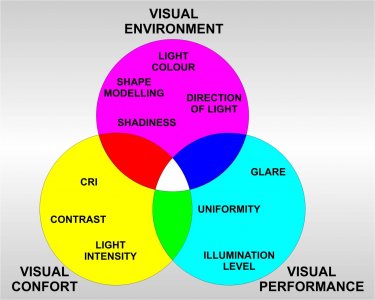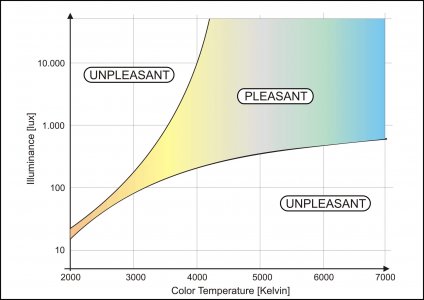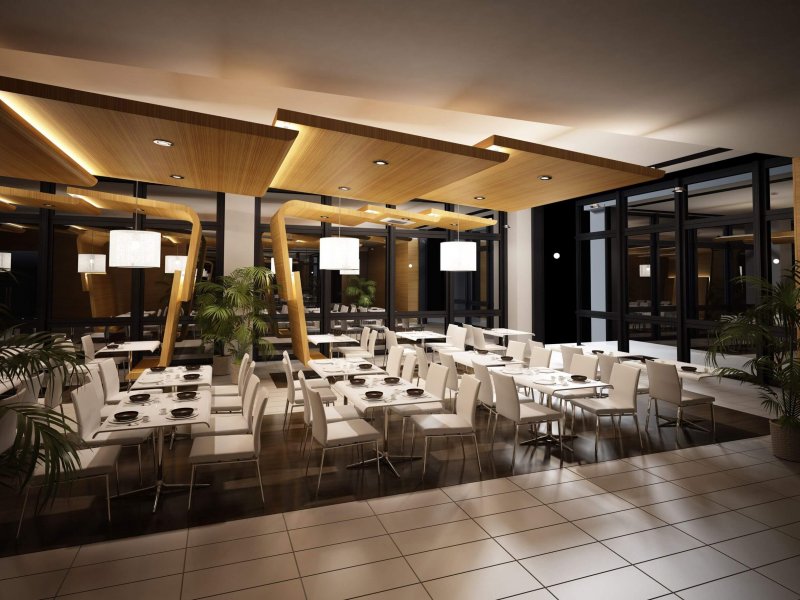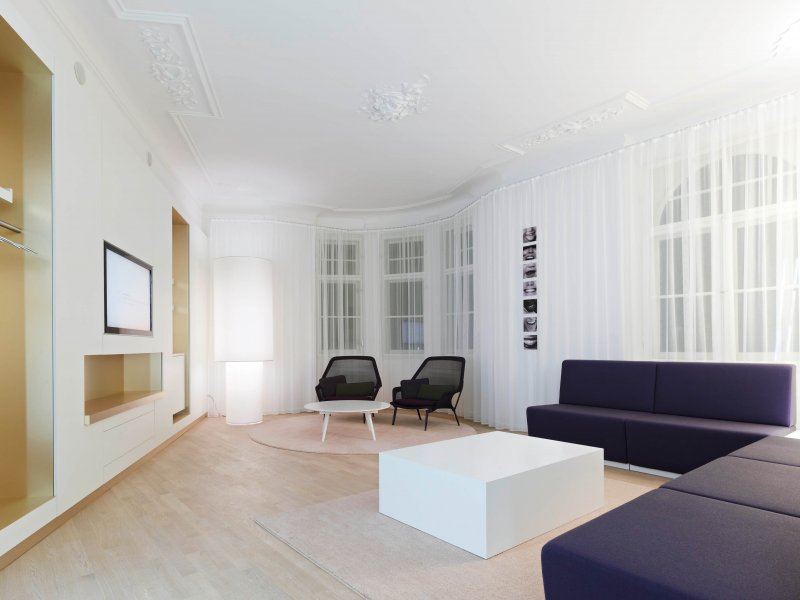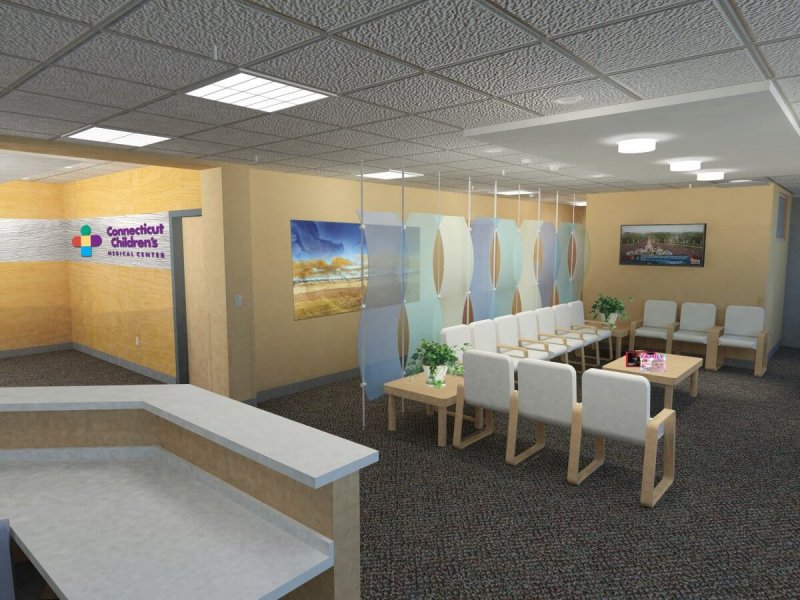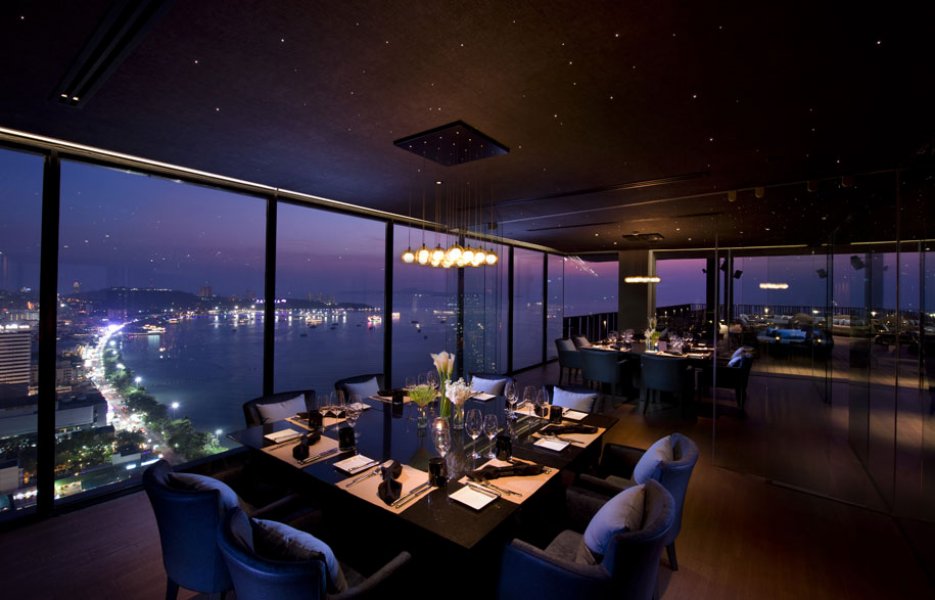Ergonomics
The standard definition of Ergonomics that can be found on Wikipedia and the like goes something like this: "Ergonomics (or human factors) is the scientific discipline concerned with the understanding of interaction among humans and other elements of a system, and the profession that applies theory, principles, data and methods to design in order to optimize human well-being and overall system performance." There's another, less known discipline known as Humanometrics (Anthropometrics) that deals with different geometrical, mechanical, mathematical, physical, chemical and other types of measurements related to the average human.
Lighting quality depends upon both the physical and the psychological parameters of the human being. In general, we can say that good lighting quality exists when a lighting system creates good conditions for seeing, supports task performance or setting-appropriate behaviour, fosters desirable interaction and communication, contributes to situation-appropriate mood, provides good conditions for health, avoids ill effects, and contributes to the aesthetic appreciation of the space.
Lighting quality is not inherent to a space or a lighting design, but to the way the light, or lighting, affects people. This fact cannot be measured, but as indicated above, it is linked to the visual environment, visual comfort and visual performance. Each of these three parameters can be developed further. These factors are interrelated in many ways: especially visual comfort and performance, since they can both be impaired by a phenomenon called glare.
Visual environment
Luminous ambience perception is inherent to people's perception of light. Colour temperatures, colour rendering, light distribution, uniformity, luminaire types – all contribute to the luminous ambience in a space.
1. Modelling shape
Lighting has the ability to model shapes at a given point in a space, if the three-dimensional object placed at this point is clearly visible.
The direction and uniformity of the light has a strong impact on our ability to read three-dimensional objects. If an object is seen against a background of similar brightness, it can only be distinguished by the areas of light and shadow created on its surface by the light.
If the light is too diffuse, no shadows are cast and the object looks blurred. If, on the other hand, the light is too strong and direct, the extreme contrasts generated can be unpleasant to the eye and may even give rise to optical illusions. This is important to know in places such as sport arenas and halls where fast ball games are played.
Good modelling is also recommended in public places. People's faces can only be distinguished properly if the light has adequate modelling abilities.
- modelling depends on the light distribution, not on the mean light level
- a combination of diffuse light reflected from light walls and much stronger direct light from a considerably small window will usually create very good modelling.
2. Direction of light
The luminous distribution of the luminaires has a strong impact on the modelling ability of the light and the contrasts within the scene. The more direct the lighting, the higher the contrasts. Light striking an object at an angle will emphasise its form and texture more than diffuse light.
3. Colour temperature
The correlated colour temperature CCT describes the quality of the light emitted by light sources. It indicates the equivalent temperature that a black body radiator would need to have in order to produce light of the same colour.
The way we feel when placed in an environment with a dominant CCT depends on the brightness of the room. The higher the illuminance, the more comfortable we feel with cool colour temperatures.
4. Shadow
In our three-dimensional world, we perceive our surroundings through form and shapes. Shadow is essentially important to enable us to understand if an object is flat or three-dimensional. Only when our surroundings are easily legible by our brain, can we feel relaxed and comfortable.
Visual performance
Visual performance describes the ability of a person to detect, identify and analyse the details contained in his field of view, taking into account the speed, the quality and the accuracy of his perception.
Visual performance depends, on the one hand, on the inherent characteristics of the task to be performed (dimension, shape, position, colour or reflectance of the details and the background), and on the other hand, on our perception, which is influenced by the lighting conditions (uniformity, glare).
Visual performance is also affected by other parameters such as the respective observer's visual system, external factors that may impede attention, the nature of the background and, more generally, the way that the working space is organised.
- Illumination level
When talking about the quality of light in a working environment, the first question to ask is: "How much light is required?" There are recommendations as to what the minimal illuminance should be. Some of those are provided by the CIE Code for Interior Lighting, but we also have European norms that prescribe minimum values for different situations. The values quoted are based on a healthy 20-year-old observer with good vision. For example, EN prescribes an illuminance of 500 lux between shelves in a grocery store. However, if we consider that the target group for grocery stores comprises people of 40 and more, and if we refer to the next diagram, we can see that values suggested by the norm, differ significantly from those needed in reality (the coloured lines correspond to the age).
- Uniformity
At night, people are less able to perceive colour, contrast and depth. We know that light is reflected by objects. Therefore maintaining shadow in parts of the streetscape becomes important to enable the cognitive interpretation of our surroundings and to determine the shape of objects and their position in the space. In spite of this obvious fact, lighting standards and regulations require uniform illuminance between poles, in an attempt to replicate daylight conditions and improve visibility. On the other hand, this tends to reduce visual acuity by eliminating contrast, and in fact increases glare by requiring light sources to be mounted higher up on the pole. Experts recommend a pattern of overlapping ovals to provide contrast and promote shadow formation. Human beings are generally more used to non-uniformity and to light-dark contrasts. Uniformity washes out contrasts and shadows generating less interesting environments.
Then again, wider spacing between the pole-top luminaires and the creation of pools of light and shadow requires repeated adjustment of the eyes, which may in turn give rise to eyestrain and temporary blindness when entering and leaving the pools of light.
- Glare
Glare is a visual sensation caused by excessive and uncontrolled brightness, such as direct or reflected sunlight or artificial light such as car headlamps at night. Glare is caused by a significant ratio of luminance between the task (that which is being looked at) and the glare source. No matter what space we are concerned with, glare is something that should be avoided. The only difference is if we talk about stage (theatre or concert hall), where glare is a part of the show and is created on purpose.
Glare can be generally divided into two types: discomfort glare and disability glare. Disability glare is the reduction in visibility caused by intense light sources in the field of view, while discomfort glare is the sensation of annoyance or even pain induced by overly bright sources (Rea 2000). When glare is so intense that vision is completely impaired, it is sometimes referred to as dazzle.
Visual comfort
Visual comfort is a subjective impression related to the quantity, distribution and quality of light. Visual comfort is achieved when objects can be seen clearly, without causing eye fatigue, in a pleasantly coloured environment. A comfortable visual environment supports the well-being of the occupants and their productivity. Spaces that are poorly or overly lit tend to cause eye fatigue – in the same way as a space with poor light distribution or a space whose luminous spectrum is not adapted to the sensitivity of the eye – accompanied by a feeling of discomfort and reduced visual performance.
Visual comfort depends on a combination of physical parameters: the illuminance level for the visual task, the light distribution in the space, colour rendering and the colour temperature of the light source, and the absence of glare. Visual comfort also depends on physiological and psychological factors related to the individual, such as age, visual acuity or the opportunity to enjoy a view outside.
1. Luminance – brightness
Luminance is measured in candela per square metre and is an indicator of how bright a surface appears to the eye from a particular angle of view. However, the eye does not behave like a linear receptor. That means that an object that has twice the luminance of another one does not necessarily appear twice as bright to our eyes. There is no linear relationship between luminance and perceived brightness.
How we perceive the brightness of an object depends on the luminance of the object and the state of adaptation of our eyes, as well as the luminance of the surroundings in which the object is located.
2. Contrast
Contrast is a measure of the difference of luminance levels between two areas, or between an object and its background. It is usually defined as: C = (L object – L background) / L background
Unfortunately, there is no agreement on a method of expressing contrast in the literature available.
The human visual system can adapt to a very wide range of luminances, which may be much reduced depending on the given scenario. If both very bright and very dark objects are in the field of view (high contrasts), the dark ones will appear to be black, while the bright ones will look completely washed out. It is then impossible to distinguish any details.
3. Colour Rendering
The colour rendering of a light source is an indicator of its ability to realistically reproduce the colour of an object. Pursuant to the CIE, colour rendering is given as an index between 0 and 100, where lower values indicate poor colour rendering and higher ones good colour rendering. The colour rendering of a light source is compared to daylight if its CCT is >5000K, and otherwise to a black body (i.e. a source that produces a continuous spectrum).
The psychology of colour
Although it was not mentioned before, colour plays important role in our psychology. From the early days of mankind, poisonous fruit was distinguished from healthy fruit by colour. To this day, the impact of colour on humans has been the focus of many research studies. Typical emotional patterns have been discovered to stand in relation to dominant colours. The following table gives a simplified overview:
The ergonomics of light in practice
How do we implement everything that has been said until now in our real world? An experienced and competent planner needs to have all of this in mind before he embarks on a design process. The following examples demonstrate the importance of the ergonomics of light in real projects.
Tunnel lighting
Some might say that there is nothing to connect tunnel lighting with the ergonomics in lighting, but think again. The critical parts of every road tunnel are the entrance and exit points, where a good designer will create the appropriate lighting intensity to facilitate drivers passing through without risk.
This is a challenging task. When entering a dark space, the human eye sometimes needs more than 30 minutes to truly adapt to the surroundings, which is why entrance zones feature much higher lighting levels than central part of the tunnel. On the other hand, after dark the road lighting for the section of road after the tunnel needs to allow drivers to adapt to the natural darkness.
Dentist’s waiting room
Very few people feel comfortable in a dentist’s waiting room. So how can we take away some of the natural stress felt in such situations? How can we create a comfortable ambience that will permit patients to calm down and wait for their turn in a relatively relaxed state of mind? The following images show a poorly lit waiting room, a reasonably well lit waiting room and a very comfortable one.
Sky restaurant
So-called sky restaurants are usually designed so people can enjoy a panoramic view all day long, including during the hours after dark. If the lighting system veils the view, guests are unable to enjoy the night- time panoramic view of the city below. The tables are subtly lit and patrons can enjoy the view out of the window.
Magnetic resonance imaging facilities
MRT rooms count as one of the most stressful medical diagnostics spaces, especially for children, who are in most stressed when lying on the MR table ready to be subjected to magnetic resonance imaging. To reduce stress level, positive lighting effects can be generated on the walls and, above all, the ceiling. Today, it is very simple to arrange screens to display scenes from children’s movies, or some pleasant sequences or images of summer skies, for example.
Light pollution
One might think that light pollution has nothing to do with this topic, but trust me, it has! Light pollution is not only a case of road lighting left on all night. It is every form of light that occurs where it is not wanted. One of the most important aspects of light pollution is the one that affects human health, especially that of children. It is strongly advised that night lights used in children’s bedrooms do not directly illuminate their faces, because this can lead to them becoming short-sighted.The eye is the only human organ that never sleeps. Although it is covered by an eye-lid, light can still enter the eye. Receiving light stimuli, the brain then tries to focus the picture, usually shortening the focus distance. If this occurs regularly and over a longer period of time, the eye will tend to permanently shorten the focal distance, making it a kind of standard setting for the eyes. Result: myopia!
Conclusion
When creating environments that align as far as possible with human needs, lighting takes very important role. Skilled designers will pay attention to the different aspects of space and light so that the projects realised meet specific biological and psychological needs. Lighting designs need to address the requirements of the respective architectural space and the users of that space. Colour temperature, luminous intensity, and the number and type of light sources required to create, promote or enhance a specific ambience or environment are integral to concept phase planning. The outcome of such an approach is a feeling of well-being – and potentially pleasure – even if the purpose or function inherent to the space is unpleasant.
References:
- https://www.educate-sustainability.eu/mobile/content/lighting
- http://dariacasciani.net/?s=Light+and+colours
- http://www.new-learn.info/packages/clear/visual/people/index.html
- http://www.lightinglab.fi/IEAAnnex45/guidebook/3_lighting%20quality.pdf
- http://www.ecse.rpi.edu/~schubert/Light-Emitting-Diodes-dot-org/Sample-Chapter.pdf
- http://www.lightingdeluxe.com/workplace-lighting-ergonomics.html
- Boyce, P. (2003), Human factors in lighting, Taylor & Francis, London and New York
- Ginthner, D. A. (2002) Lighting: its effect on People and Spaces, accessed 10/04/2015 http://www.informedesign.org/_news/feb_v02-p.pdf, accessed the 12 May 2015.
- William M.C. Lam, Perception and Lighting as Form-givers for Architecture (New York: Van Nostrand Reinhold, 1992)
- Kaplan R., Kaplan S., and Ryan R. L. (1998), With people in mind: Design and management of everyday nature. Washington, DC: Island Press
